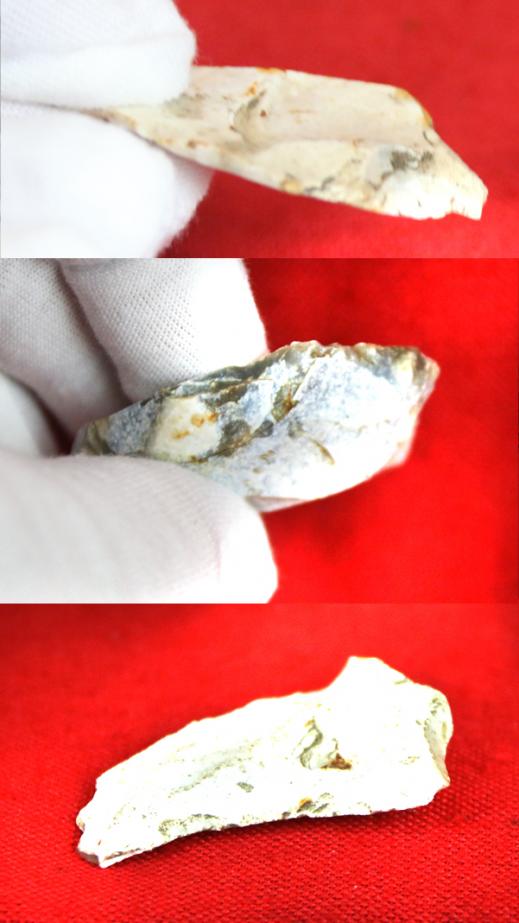Group of Three Neolithic Stone Age 'Scraper' Flints Around 5000 Years Old. Arthur Halcrow Versage Collection. Possibly An Ideal & Unique Gift Idea For Christmas
3 Parts of Stone Age Scraper Group. Hand knapped by a Stone Age person in Britain around 5000 years ago, from whole flints to create three scraping tools.
Neolithic, 3rd millennium BC.
From our acquisition of the Arthur Halcrow Versage collection, Reigate, Surrey, UK; discovered from Hallard’s Fen, Burwell, Cambridgeshire, in 1969. In the Neolithic period (later stone age) people started to settle down and start farming. At places such as Springfield Lyons, these early settlements have been identified. It was also at this time when stone tools, which up until this point had been purely functional, started to take on a more symbolic meaning. Polished stone axes and other tools that were never used have been found across the county, showing changes in social hierarchy and possibly even the development of religion.
The Neolithic also known as the "New Stone Age", the final division of the Stone Age, began about 12,000 years ago when the first development of farming appeared in the Epipalaeolithic Near East, and later in other parts of the world. The division lasted until the transitional period of the Chalcolithic from about 6,500 years ago (4500 BC), marked by the development of metallurgy, leading up to the Bronze Age and Iron Age. In Northern Europe, the Neolithic lasted until about 1700 BC, while in China it extended until 1200 BC. Other parts of the world (the New World) remained in the Neolithic stage of development until European contact.
The Neolithic comprises a progression of behavioral and cultural characteristics and changes, including the use of wild and domestic crops and of domesticated animals.
The term Neolithic derives from the Greek neos and lithos "New Stone Age". The term was coined by Sir John Lubbock in 1865 as a refinement of the three-age system..
Generic photos in the gallery of three from the Neolithic flints in the collection.
Code: 23773
125.00 GBP



